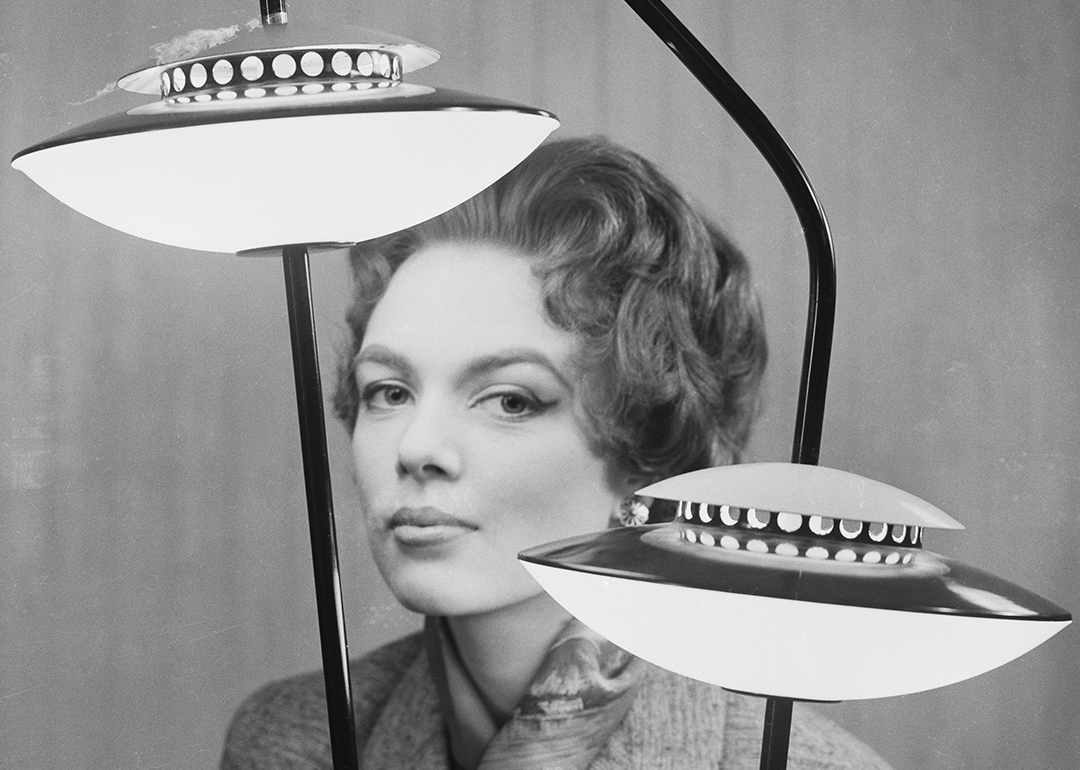
9 essential pieces of midcentury design popularized by the Space Race
This story originally appeared on Living Spaces and was produced and distributed in partnership with Stacker Studio.
9 essential pieces of midcentury design popularized by the Space Race
After the Soviet Union successfully launched the first-ever artificial satellite in 1957, the competition between the United States and its Cold War rival became more urgent. The Space Race, a technological and ideological competition to explore outer space, began earnestly with both sides eager to launch satellites and put living creatures in space.
As U.S. leading scientists and politicians became increasingly confident in achieving this goal, ordinary citizens became enamored with optimistic visions of a future full of space exploration and life among the stars. Shows like "The Jetsons" and "Star Trek" gave viewers a glimpse of a future that could be.
At the same time, the development of groundbreaking materials hastened during World War II, introducing designers to fiberglass and plastic, which would remake material culture. These furniture pieces, a subset of midcentury pieces, were inspired by the forward-thinking, synthetic material heyday of the Space Race. They gave birth to sleek furnishings that looked like they belonged to another world altogether.
When it comes to Space Age design staples, which ones do you know? Living Spaces combed design history to compile a list of nine essential midcentury furniture pieces bolstered by the Space Race, from Ball chairs to Sputnik lamps.
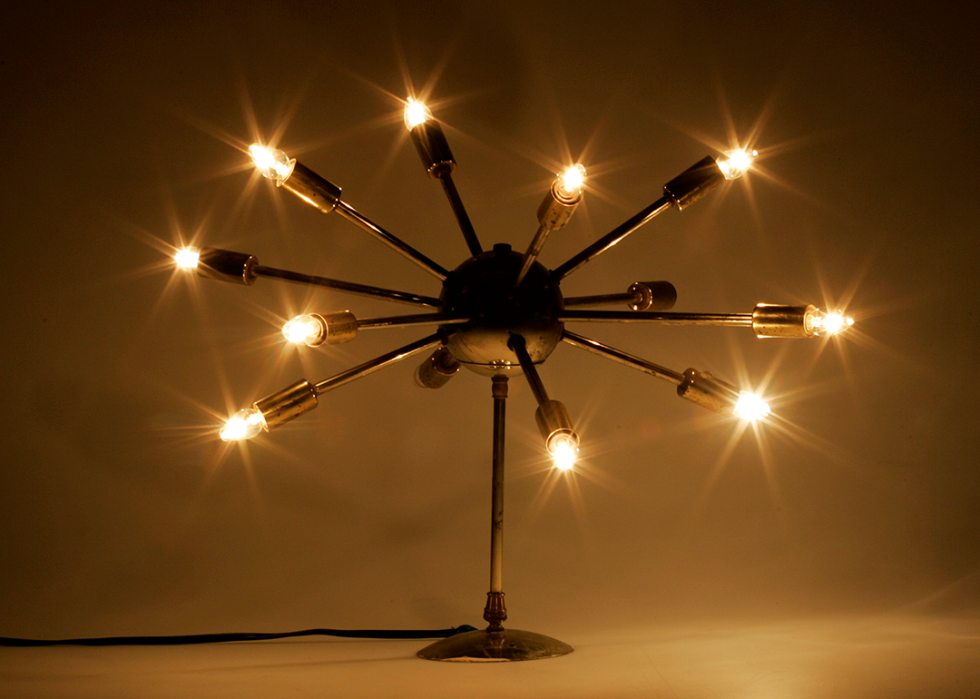
Sputnik lamp
The Sputnik lamp's name came from the Soviet Union's Sputnik I, which launched in 1957 and became the world's first artificial satellite. Its success is widely credited with kicking off the Space Race, so it's only natural that one of the most iconic Space Age design pieces carries its name.
Also commonly known as the Sputnik chandelier, the lighting staple was first created by Italian designer Gino Sarfatti, whose sketch dates back to 1939. By the 1950s, Sarfatti produced his drafted version, calling it number 2003, but its better-known moniker, Sputnik, eventually took over its identity.
Sputnik lamps are known for including a base surrounded by multiple arms, each containing a light bulb. Even today, the satellite often influences designers to produce lighting fixtures reminiscent of the object.
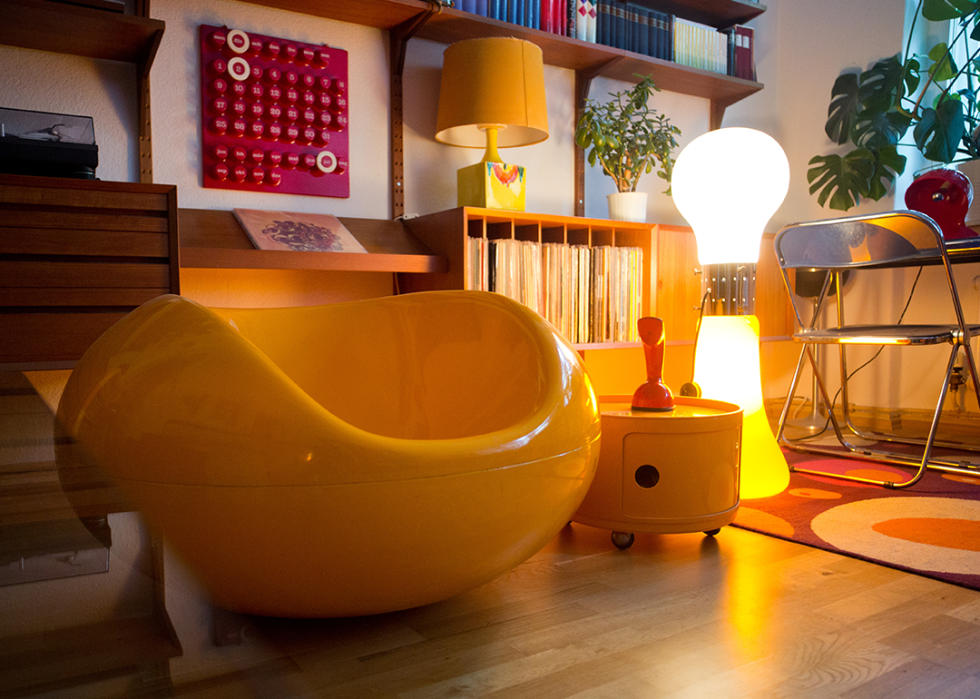
Pastil chair by Eero Aarnio, Componibili storage by Anna Castelli Ferrieri, Birillo lamp by Carlo Nason
The Pastil chair is essentially the younger sibling of Eero Aarnio's iconic Ball chair. The chairs were designed to fit into the void of the Ball chair, with no egg-shaped acrylic frame included, just an impression that indicated where one could sit. Despite requiring less construction, the product garnered the American Industrial Award in 1968 and evokes futuristic, manufactured pod living.
Pictured immediately alongside it is Anna Castelli Ferrieri's Componibilli storage unit, a cylindrical storage piece that can be outfitted with castors and doors. This modular piece is stackable without screws and even doubles as a tray. Just right of the storage unit is Carlo Nason's Birillo lamp, which features two Murano glass bulb shapes joined by a metal cylinder. The lamp could be lit separately or together, depending on the light needs of the room.
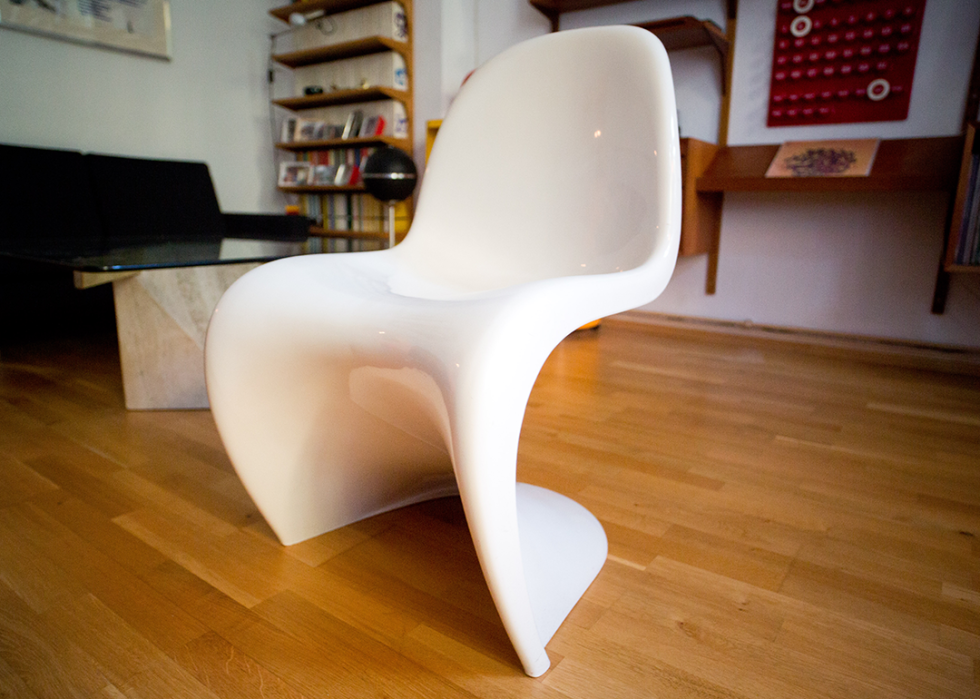
Panton chair by Verner Panton
During the Space Age, single-use plastics became a popular design material, often presented in futuristic, unique shapes. Swiss designer Verner Panton's eponymous chair, the Panton chair, is one of the most iconic examples of this fusion of utopian, forward-looking design and large-scale plastic use.
The Panton chair, made out of a single piece of plastic, has a sleek, S-shaped cantilever design that plays off plastic's contradictory features: flexibility and rigidity. It also caught the eye with its bold form and single color, a concept it popularized on a grand scale after its 1967 debut. However, despite being a technological marvel, creating the chair in its original specifications was impossible until decades later, in 1999.
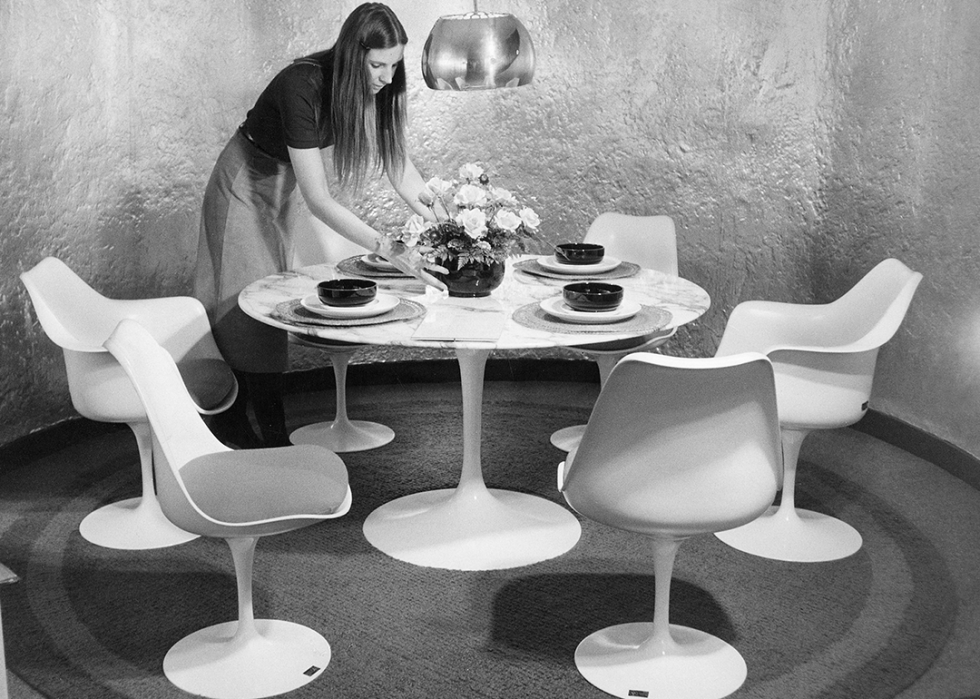
Tulip table and chairs by Eero Saarinen
Finnish American designer Eero Saarinen initially created the Tulip table and chairs to avoid the traditionally "ugly, confusing, unrestful world" beneath chairs and tables. The furniture pieces make use of molded fiberglass shells and an aluminum stem.
The pieces were designed for Knoll in 1957 as part of Saarinen's Pedestal collection. Stanley Kubrick's iconic 1968 sci-fi film, "2001: A Space Odyssey," featured a Tulip-style table.
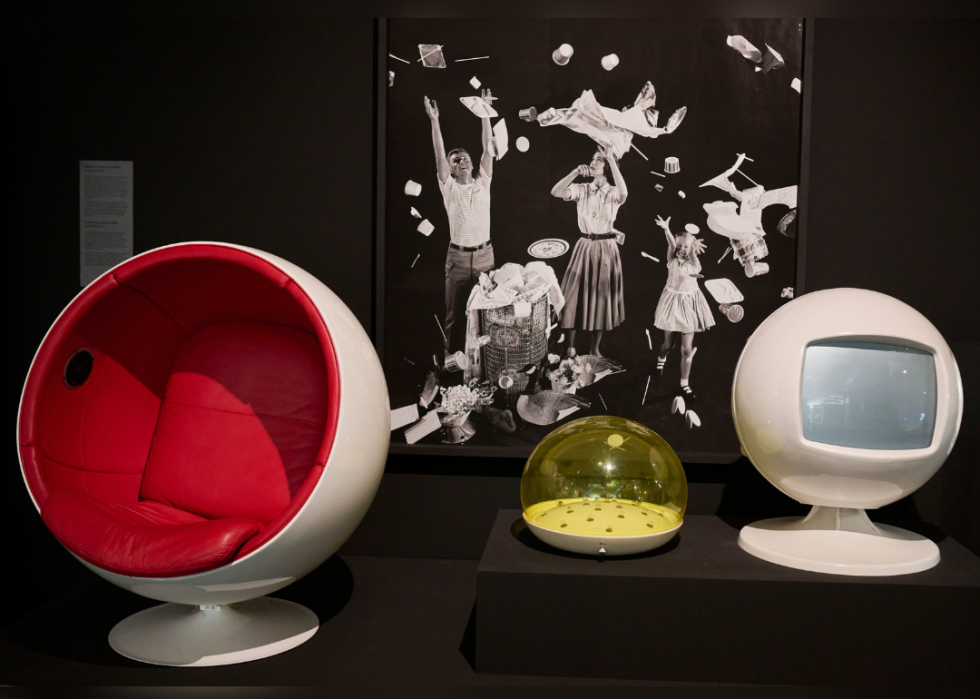
Ball chair by Eero Aarnio and Moon lamp by Gino Sarfatti
Despite not setting out to create a futuristic design, Eero Aarnio's Ball chair has gone down in history as one of the most iconic Space Age designs and arguably one of the most iconic industrial design pieces, period.
Ball chairs, made of fiberglass, immediately call to mind futuristic pods, with precise geometry, synthetic materials, and eye-popping colors that evoked a man-made future when it was released to the public in 1966. The design was also popular onscreen, appearing in well-known science fiction films such as "Mars Attacks."
Also pictured is Italian designer Gino Sarfatti's Moon lamp, made with a translucent plastic dome with several microbulbs inside that echo lunar craters. Sarfatti designed the product in 1969, which also happens to be the year humankind first landed on the moon.

Inflatable sofa by Quasar Khanh
Quasar Khanh's affiliation with Space Age design can be found in his very name. After marrying his wife, fashion designer Emmanuelle, in 1957, he took on the name Quasar, a term used to describe a bright object powered by black holes.
Today, he is best known for his "inflatable sofa," created as part of his Aerospace inflatable furniture, including chair designs inspired by satellites and spaceship seating. The concept became so popular that it merited a Vogue family photograph in 1970.
A vintage ad for one of the designer's inflatable pieces boasted it "will float you into the comforts of 'tomorrow'" and that it was as "modern as a stroll on the moon."
Story editing by Carren Jao. Copy editing by Kristen Wegrzyn.



